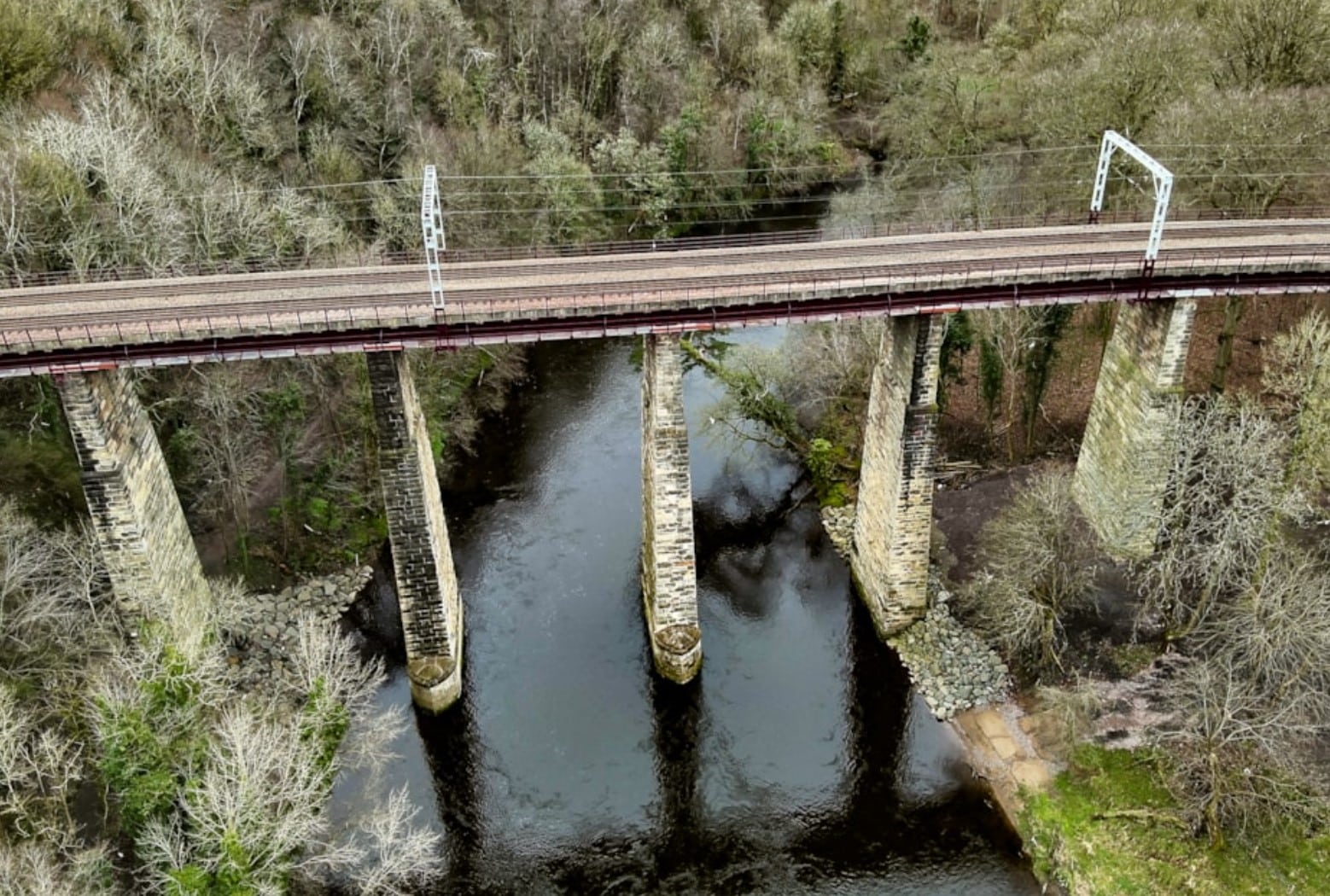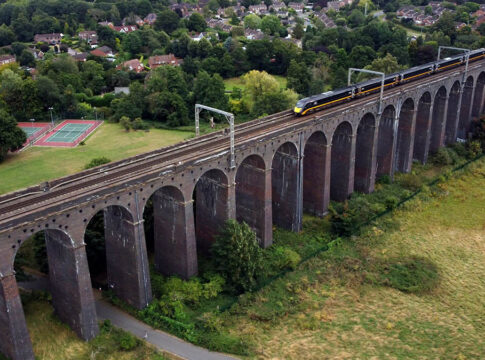A 13-month project to strengthen the 160-year-old Camps viaduct has been delivered successfully.
Nestled amidst ancient woodland, the 11-span viaduct serves as a crucial artery for passengers travelling between Glasgow and Motherwell by train.
Along with Story Contracting, Network Rail began work to extend the lifespan of the historic landmark, which towers 35m above the River Clyde, in spring 2023.
Engineers completed 1370 repairs, replaced more than over 10,000 rivets and added 65 tonnes of new steel during these extensive strengthening and refurbishment works.
Essential scour protection works were also carried out to both the east and west river banks and this included the installation of over 800 tonnes of rock armour.
Mark Wilson, senior programme manager, Network Rail, said: “It’s great to see the work at Camps viaduct complete. The £6m project has helped strengthen the structure for years to come but it’s so much more than that.
“There has been a lot of planning to make sure the project was carried out efficiently while causing as little disruption to the people who live nearby and minimising disturbance to the surrounding land, riverbed, and the wildlife that make the woodland their home.
“Work of this kind will not be needed for at least another 25 years. With a stronger bridge, we can help keep communities connected by continuing to run a safe and reliable railway.”
Steven McVey, senior project manager, Story Contracting, said: “The Story project team at Camps Viaduct are proud to have delivered the refurbishment works to this important structure on behalf of Network Rail, alongside our key supply chain partners.
“This project not only demonstrates our commitment to enhancing Scotland’s Railway infrastructure but also highlights our team’s dedication to quality and safety in all aspects of engineering.”
To protect the surrounding environment from dust or pollution, including the River Clyde which flows underneath, work on the structure was completed while the viaduct was encapsulated and sealed.
Pontoons were built in the river so that the scour and masonry repair work could be done most safely and to limit disruption during work on the riverbed and underwater.
Protecting the ancient woodland has involved the installation of Cellweb®TRP, which are mats laid on the ground at the start of the project to help protect the roots of the trees, the soil and other fauna.
The project team sought advice from experts including ecologists, park rangers and ornithologists, and, acting on best recommendations, installed netting on the structure to deter birds from nesting during the work.
For specific protected species in the area, an alternative nesting basket which was winched up to the tallest tree in the woodland was provided by tree climbing teams.

